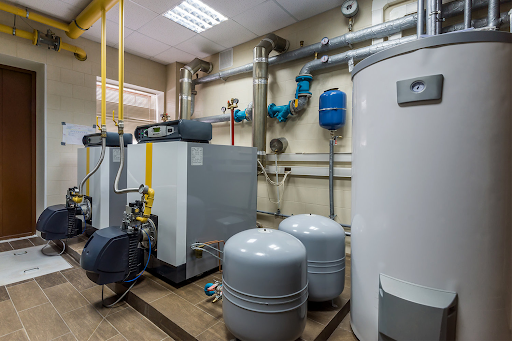A well-functioning boiler is essential for maintaining a comfortable and efficient heating system in your home. Over time, certain boiler parts may wear out or become faulty, leading to decreased performance and potential breakdowns. In this post, you will guide you through the process of identifying faulty boiler parts and replacing them to restore efficiency, reduce energy consumption, and prolong the lifespan of your boiler.
Understanding The Components:
Familiarise yourself with the key components of your boiler system. This includes the heat exchanger, burner, ignition system, circulator pump, pressure relief valve, expansion tank, and thermostats. Understanding how each part contributes to the boiler’s operation will help you identify potential issues more effectively.
Recognizing Common Signs of Faulty Parts:
Pay attention to warning signs that may indicate faulty boiler parts. These can include strange noises (such as banging or whistling sounds), fluctuations in water temperature, insufficient heat output, leaks, or frequent system cycling. When you notice any of these symptoms, it’s important to investigate further to pinpoint the problematic part.
Conducting Visual Inspections:
Perform regular visual inspections of your boiler system. Look for signs of corrosion, rust, leaks, or damage around the various components. Check for loose connections, frayed wires, or signs of burning or melting. Identifying visual abnormalities can provide valuable clues about which part might be causing the issue.
Consulting the Manufacturer’s Manual:
Refer to the manufacturer’s manual that came with your boiler system. It often contains detailed information about the various parts and troubleshooting steps. Use this resource to gain insights into common problems associated with specific components and recommended replacement procedures.
Seeking Professional Assistance:
If you’re unsure about diagnosing or replacing boiler parts, it’s best to seek professional assistance. A qualified heating technician can conduct a thorough inspection, diagnose the faulty part accurately, and ensure a safe and efficient replacement. They have the knowledge and experience to handle complex boiler systems and ensure the correct installation of new parts.
Identifying and Replacing Faulty Parts:
Once you have identified the faulty part, it’s crucial to replace it promptly. Here are some common examples and replacement steps:
Pressure Relief Valve: If you notice water dripping from the pressure relief valve or it constantly releases pressure, it may be faulty. Turn off the boiler, drain excess water, and replace the valve following manufacturer guidelines.
Circulator Pump: A malfunctioning circulator pump can lead to poor heat distribution. Before replacing it, make sure to turn off the power, drain the system, and follow proper installation procedures.
Ignition System: If your boiler fails to ignite consistently or has frequent ignition failures, the ignition system may require replacement. Consult a professional technician to handle this complex task.
Regular Maintenance for Prevention:
Preventive maintenance is crucial for identifying and addressing potential issues before they escalate. Schedule annual maintenance inspections with a qualified technician who can clean, tune, and test your boiler system. This proactive approach can help identify worn-out parts and ensure optimal efficiency and reliability.
Importance of Genuine Replacement Parts:
When replacing faulty boiler parts, always opt for genuine parts recommended by the manufacturer. Genuine parts are specifically designed for your boiler model, ensuring proper fit, compatibility, and performance. Using substandard or generic parts may compromise safety, efficiency, and warranty coverage.
Conclusion:
Maintaining efficiency in your boiler system requires regular inspections, prompt identification of faulty parts, and timely replacements. By familiarizing yourself with the components, recognizing warning signs, consulting professionals when needed, and conducting regular maintenance, you can ensure that your boiler operates at its best. Remember, a well-maintained boiler improves energy efficiency and provides reliable heating and hot water, keeping your home comfortable throughout the year.


